
Case #356 - September, 2013
After returning from a weekend camping trip, a hunter from Massachusetts discovered a tick attached to his lower leg. He removed the tick and brought it to his local health department, who in turn forwarded the specimen to the State Entomologist for identification. Figure A shows a dorsal view of the tick, while Figure B shows the underside. Figure C shows a close-up of the mouthparts. What is your identification? Based on what criteria? What is the public health importance, if any, if this genus in North America?
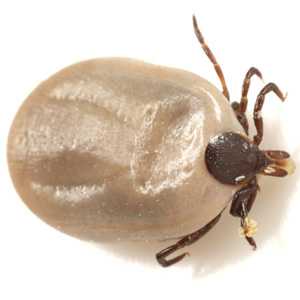
Figure A
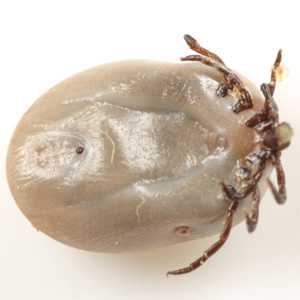
Figure B
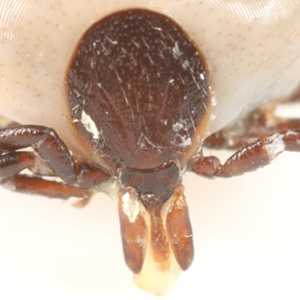
Figure C
Case Answer
The tick shown in the images was a female Ixodes sp. Diagnostic features shown included:
- an inverted, U-shaped anal groove (AG, Figure B).
- no eyes on the dorsal shield (DS, Figure C).
- mouthparts (MP, Figure C) long, in relation to the basis capituli (BC, Figure C).
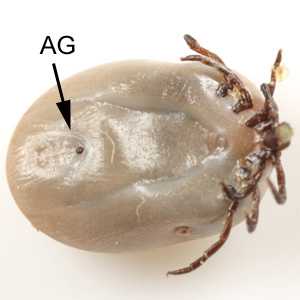
Figure B
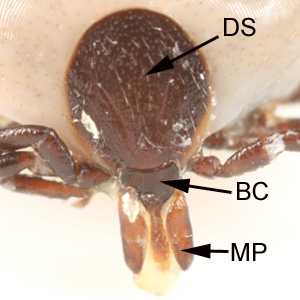
Figure C
The lack of festoons also supported an identification of Ixodes. However, in this engorged state, festoons may be difficult to visualize. The smaller dorsal shield, that only covers a small portion of the body, indicated the specimen was a female. In North America, Ixodes spp. are primarily vectors of Babesia spp. (babesiosis) and Borrelia burgdorferi (Lyme Disease). The two most medically-important species in North America are I. scapularis and I. pacificus. Identification of ticks to the species level can be challenging and is often best left to experienced entomologists and microbiologists.
More on: Ticks
Images presented in the monthly case studies are from specimens submitted for diagnosis or archiving. On rare occasions, clinical histories given may be partly fictitious.
DPDx is an education resource designed for health professionals and laboratory scientists. For an overview including prevention and control visit www.cdc.gov/parasites/.
- Page last reviewed: August 24, 2016
- Page last updated: August 24, 2016
- Content source:
- Global Health – Division of Parasitic Diseases and Malaria
- Notice: Linking to a non-federal site does not constitute an endorsement by HHS, CDC or any of its employees of the sponsors or the information and products presented on the site.
- Maintained By:


 ShareCompartir
ShareCompartir